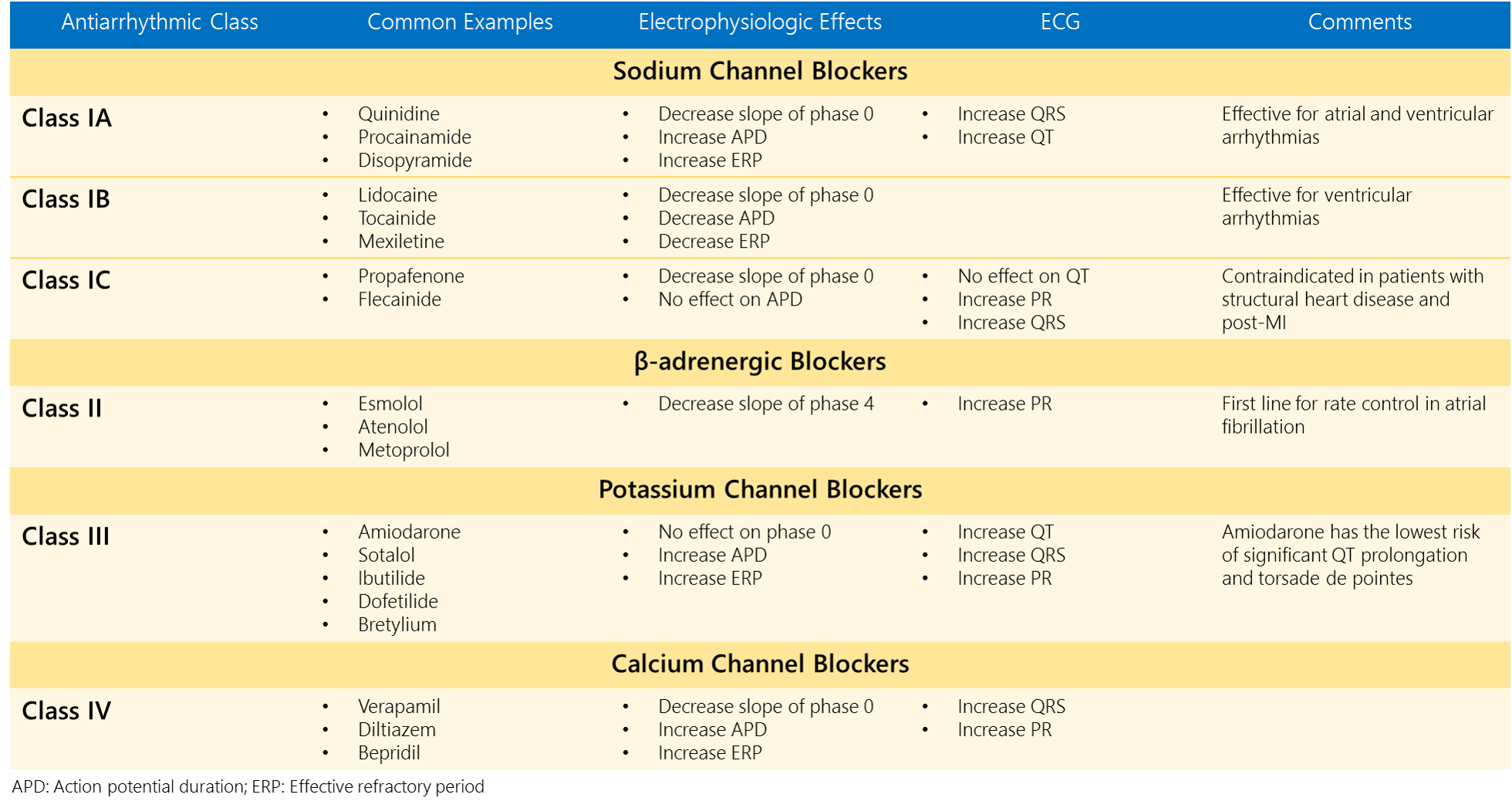WBR0401
Jump to navigation
Jump to search
| Author | [[PageAuthor::Serge Korjian, M.D. (Reviewed by Serge Korjian)]] |
|---|---|
| Exam Type | ExamType::USMLE Step 1 |
| Main Category | MainCategory::Pharmacology |
| Sub Category | SubCategory::Cardiology, SubCategory::Vascular |
| Prompt | [[Prompt::The mechanism of action of a novel experimental drug is under investigation. The drug is intended to treat patients with atrial and ventricular arrhythmias who cannot tolerate other therapies. After initial rat testing, the core lab determines that the active molecule acts on the trans-membrane proteins that regulates the resting membrane potential of cardiomyocytes. ECG monitoring demonstrates significant, dose-dependent increase in the QT interval in treated rats. Which of the following drugs has a mechanism of action similar to the experimental drug being evaluated?]] |
| Answer A | AnswerA::Sotalol |
| Answer A Explanation | AnswerAExp::Sotalol is a class III anti-arrhythmic that acts by blocking cardiac potassium channels. It is associated with a dose dependent prolongation of the QT interval. |
| Answer B | AnswerB::Verapamil |
| Answer B Explanation | AnswerBExp::Verpamil is a non-dihydropyridine calcium channel blocker, a class IV anti-arrhythmic. It has no effect on potassium channels and does not prolong the QT interval. |
| Answer C | AnswerC::Propafenone |
| Answer C Explanation | AnswerCExp::Propafenone is a class IC anti-arrhythmic. It acts mainly by decreasing the slope of phase 0, and has no effect on APD or QT interval. |
| Answer D | AnswerD::Esmolol |
| Answer D Explanation | AnswerDExp::Esmolol is a class II anti-arrythmic/β-blocker that acts by slowing conduction and decreasing the slope of phase 4. |
| Answer E | AnswerE::Mexiletine |
| Answer E Explanation | AnswerEExp::Mexiletine is a class IB anti-arrhythmic. Similarly to all other class I agents, it decreases the slope of phase 0. Mexiletine decreases APD, and ERP but has no effect on the QT interval. |
| Right Answer | RightAnswer::A |
| Explanation | [[Explanation::Sotalol is a non-selective, competitive β-blocker that is considered a class III anti-arrhythmic due to its activity as a potassium channel blocker. In the human heart, several types of potassium channels exist including voltage-gated, ligand-gated, and leak channels. The main functions of these potassium channels include the regulation of the resting membrane potential, the frequency of pacemaker cell firing and the duration and shape of the action potential. In particular, the inward rectifier potassium channel sets the resting membrane potential in atrial and ventricular cells. Sotalol causes prolongation of the action potential duration (APD), and increase in the effective refractory period (ERP). It is associated with QT interval prolongation noticeably with higher doses. It is important to note that, being a β-blocker, sotalol also has properties of class II anti-arrhythmics. The table below summarizes all the main anti-arrhythmic classes and their main effects. Educational Objective: Sotalol is a class III anti-arrhythmic that acts by blocking cardiac potassium channels. It causes an increase in the APD and a dose dependent prolongation of the QT interval. |
| Approved | Approved::Yes |
| Keyword | WBRKeyword::sotalol, WBRKeyword::Beta-blocker, WBRKeyword::anti-arrhythmics, WBRKeyword::class III, WBRKeyword::potassium channel blockers, WBRKeyword::arrhythmia, WBRKeyword::atrial fibrillation |
| Linked Question | Linked:: |
| Order in Linked Questions | LinkedOrder:: |